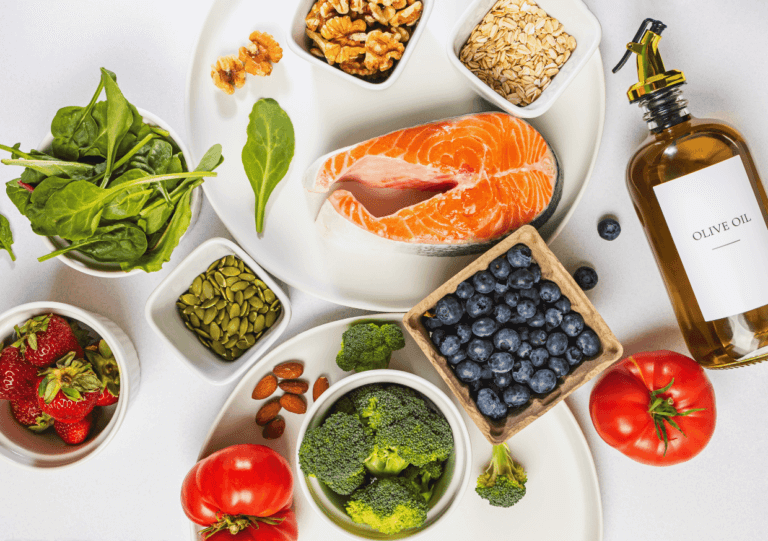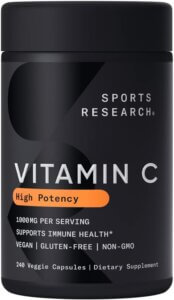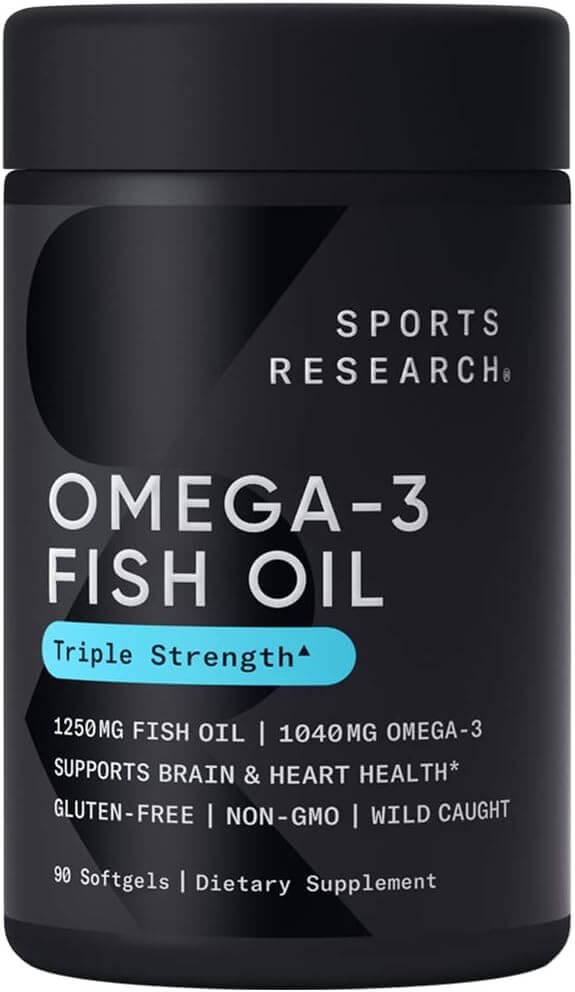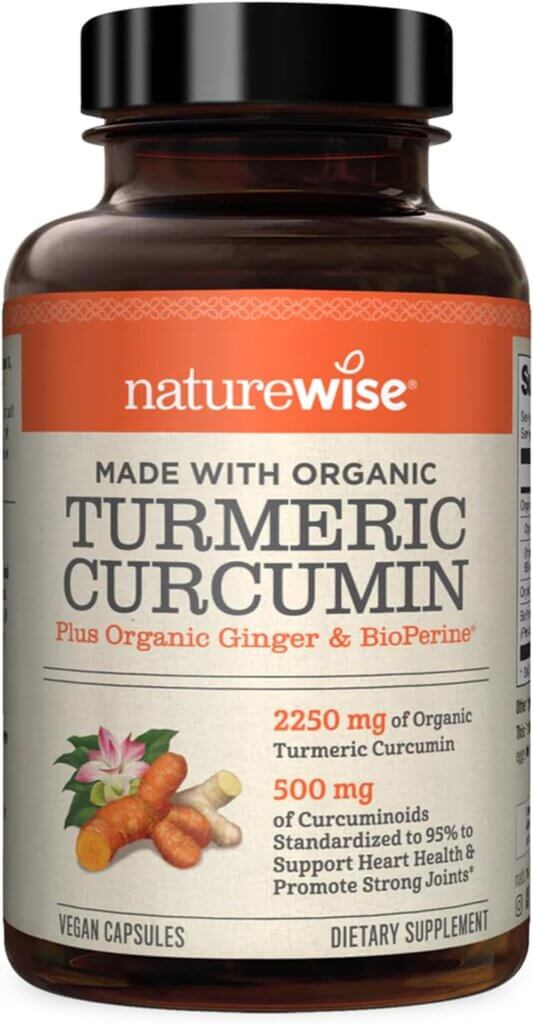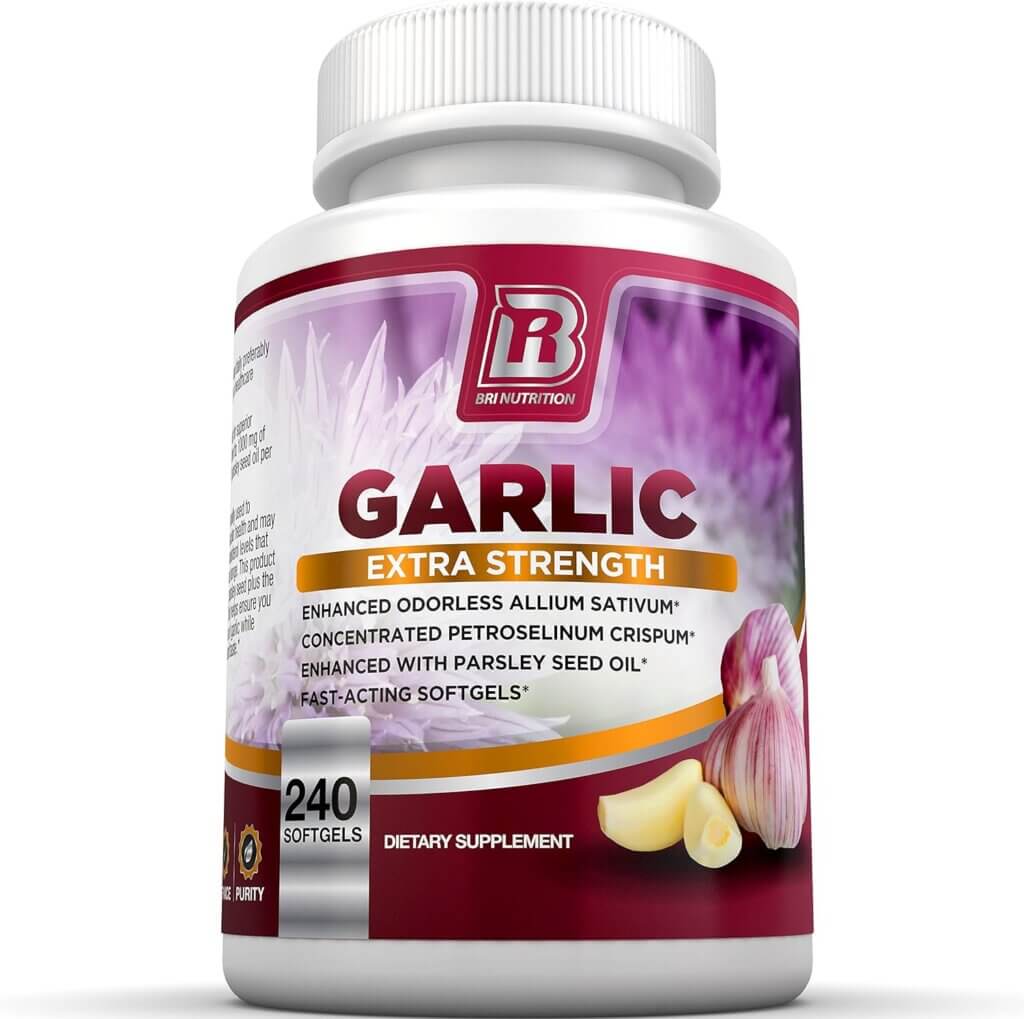This website uses affiliate links which may earn a commission at no additional cost to you.
As an Amazon Associate we earn from qualifying purchases.
In the world of road cycling, the importance of nutrition cannot be overstated. It’s not just about the strength in your legs or the aerodynamics of your bike; your diet plays a pivotal role in shaping your performance on the road.
In this guide, we will delve deep into the realm of “Anti-Inflammatory Foods” and explore how they can be a game-changer for cyclists.
Learn how incorporating these foods into your daily diet can help you ride more smoothly, recover more swiftly, and keep inflammation at bay.
Inflammation 101: Understanding the Basics

Before we start talking about foods that can help, let’s get to know what inflammation really is. Imagine it as your body’s natural reaction when something goes wrong – like when you hurt yourself, get sick, or feel stressed. In these situations, your body uses inflammation to protect you and make things better.
Short-term inflammation is like a quick fix. It helps your body heal and get back to normal. But, here’s the tricky part: when inflammation sticks around for a long time, it can be a bit of a troublemaker.
It’s like a slow leak in your bike tire – it doesn’t seem like a big deal at first, but over time, it can really mess things up. This chronic inflammation can drain your energy, make you feel tired, and even lead to health problems down the road.
Engaging in tough workouts is fantastic for enhancing your endurance and building stronger muscles. However, there’s a downside: it can lead to more inflammation in your body. This is why it’s crucial to include anti-inflammatory foods in your diet, especially after exercising.
Now, it’s not just about what helps fight inflammation; we should also be aware of foods that can cause inflammation. Some foods, like sugary snacks, processed foods, and too much red meat, can actually trigger more inflammation in your body.
So, it’s essential to balance your diet with foods that help reduce inflammation, keeping you in top cycling shape and feeling your best.
Anti-Inflammatory Nutrients: Nature’s Warriors
Now that we’ve laid the groundwork, let’s introduce you to the champions of inflammation reduction – anti-inflammatory nutrients.
These are the unsung heroes found in various foods, comprising vitamins, minerals, and other bioactive compounds that actively combat inflammation within your body.
1. The Power of Fruits and Vegetables: Nature’s Color Palette

The world of fruits and vegetables is like a beautiful, colorful palette in nature. These foods not only look amazing but also have incredible health benefits, especially when it comes to fighting inflammation.
When you eat a variety of fruits and vegetables, you’re giving your body a powerful mix of natural compounds that can help reduce inflammation. Each color you see in these foods represents a different group of inflammation-fighting superheroes.
For example, blueberries are rich in something called anthocyanins. These little compounds are like tiny warriors that battle inflammation in your body.
Carrots, on the other hand, are packed with something called carotenoids – they’re like the protective shields that keep inflammation at bay.
And let’s not forget about oranges! Oranges are a fantastic source of vitamin C, which helps your body repair itself after those tough rides and also fights off inflammation, so it’s an essential addition to your anti-inflammatory diet.
So, by including lots of different colored fruits and veggies in your meals, you’re essentially recruiting an army of inflammation fighters. Remember to add a rainbow of fruits and vegetables to your plate, and your body will thank you for it!
2. Omega-3 Fatty Acids: A Cyclist’s Best Friend
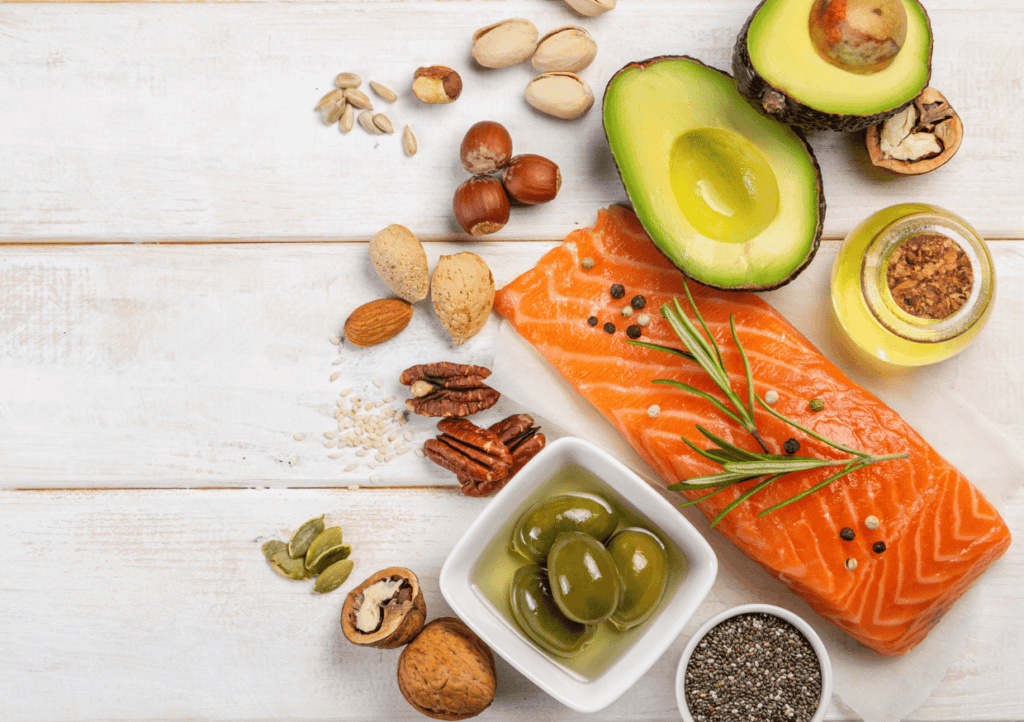
Omega-3 fatty acids are must have for cyclists, to help reduce inflammation and boost your health. You can find them in fatty fish like salmon, mackerel, and sardines, as well as in plant-based foods like walnuts and flaxseeds.
These special fats do more than just control inflammation; they also look out for your heart. Imagine omega-3s as tiny superheroes for your cardiovascular health. They help keep your heart strong and your blood flowing smoothly.
Fatty fish, like salmon, are packed with these fantastic fats. Eating fish regularly can be like giving your body a dose of omega-3 superpowers.
What’s even better is that tinned fish, like canned salmon or sardines, is very affordable and easy to mix into your meals. It’s a convenient way to ensure you get your omega-3s without breaking the bank.
But if fish isn’t your preference, there are still excellent plant-based sources available. Walnuts and flaxseeds, for instance, offer omega-3s in a convenient and tasty form. Although they don’t have as much as fish.
If you find it challenging to incorporate these foods into your diet, you can also consider omega-3 supplements. They come in various forms, like fish oil capsules or vegan-friendly alternatives, providing you with a convenient option to ensure you’re getting enough of these essential fatty acids.
Integrating omega-3-rich foods into your diet is a wise choice for cyclists. These fats help your body combat inflammation and maintain your heart’s well-being, making them an essential component of your dietary regimen.
3. Nuts: A Natural Anti-Inflammatory Snack on the Go
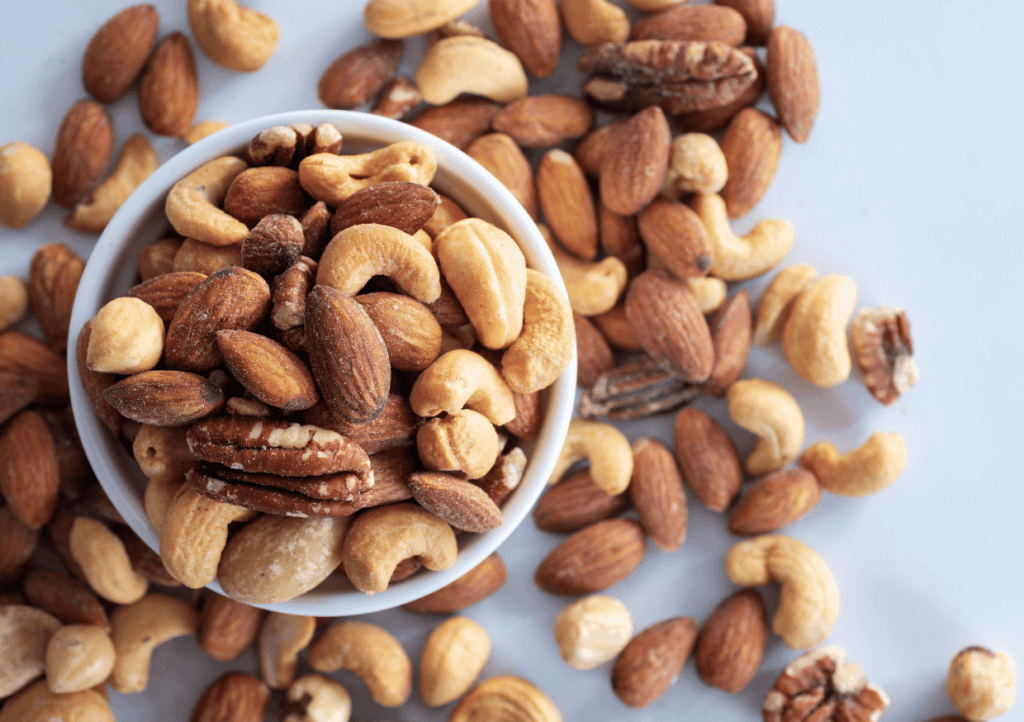
Nuts are more than just a tasty snack; they are a natural anti-inflammatory solution for cyclists. They’re packed with good-for-your-heart fats, protein to keep your muscles strong, fiber for digestion, and lots of antioxidants to help your body fight off inflammation.
Take almonds, walnuts, and pistachios, for example. These nuts are like tiny powerhouses of nutrition. When you’re out cycling, having a handful of them as a snack is a smart move.
But here’s a tip: while nuts offer many benefits, it’s important not to overdo it because they are calorie-dense. Just a small handful can provide you with sustained energy and anti-inflammatory goodness without adding too many calories to your ride.
Not only do nuts give you a burst of energy that lasts, but they also help your body calm down any inflammation that might be brewing inside. So, while you’re pedaling away, you’re also giving your body a boost of nutrients that help it recover and stay strong.
Next time you’re planning a ride, don’t forget to toss some nuts into your backpack. They’re not just a delicious snack; they’re your trusty sidekicks, supporting your energy levels and keeping inflammation in check as you conquer those cycling trails.
4. The Power of Olive Oil: How It Helps Fight Inflammation
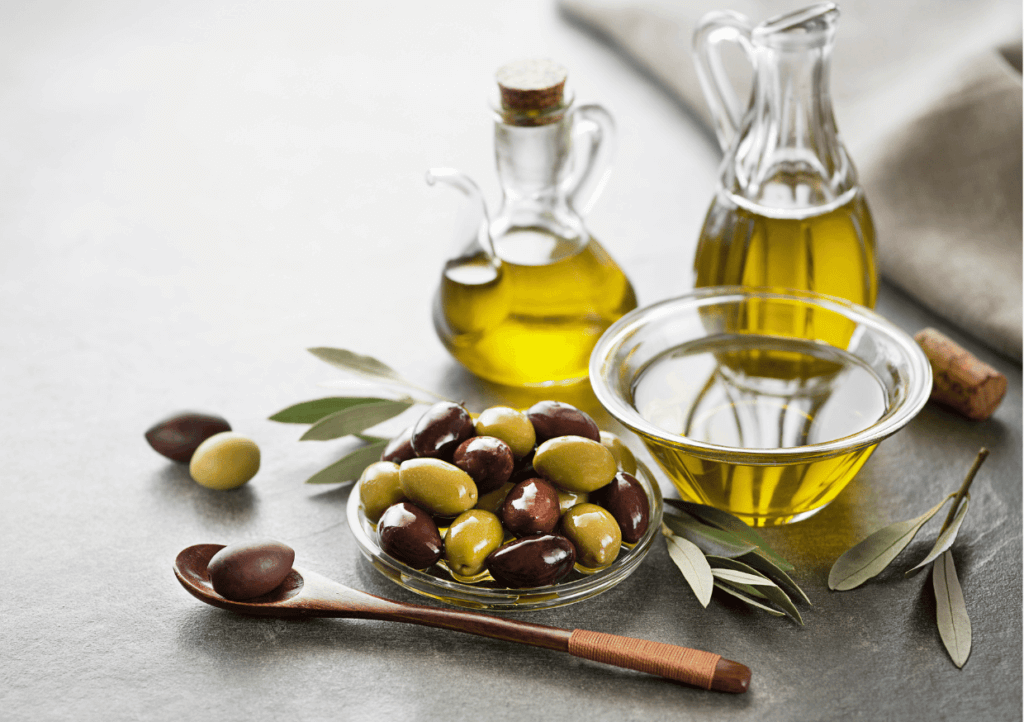
Olive oil, known as the golden elixir of the Mediterranean diet, has gained fame for its incredible health benefits, especially its ability to combat inflammation.
This liquid gold is filled with monounsaturated fats and loaded with antioxidants, making it a key component of an anti-inflammatory diet.
Olive oil’s magic lies in its unique blend of nutrients that shield your cells from the harm caused by inflammation. These nutrients act like a protective shield, preventing inflammation-induced damage to your body.
For cyclists aiming to improve their performance and overall health, olive oil can be a valuable companion on their journey.
Incorporating olive oil into your daily meals is simple. You can use it as a salad dressing, drizzle it over roasted vegetables, or even use it as a cooking oil.
With its delicious flavor and health benefits, olive oil is an easy and tasty addition to your diet. So, as you gear up for your next ride, remember to include this golden elixir in your culinary arsenal to help tame inflammation and keep you pedaling strong.
It’s important to note that not all cooking oils are created equal. Processed cooking oils like vegetable oil, corn oil, and soybean oil, for example, can actually promote inflammation. Therefore, it’s wise to avoid these inflammatory culprits and opt for the anti-inflammatory goodness of olive oil.
5. Spices and Herbs: Nature’s Inflammation Fighters

When it comes to reducing inflammation and adding a burst of flavor to your meals, spices and herbs are your best friends. These natural wonders don’t just make your dishes more exciting; they also offer a plethora of health benefits.
Let’s explore the power of spices and herbs, with a special focus on the incredible inflammation-fighting properties of turmeric.
Turmeric: The Golden Gem
Turmeric, often called the “golden spice,” is a true superstar among spices. Its active compound, curcumin, is known for its potent anti-inflammatory properties. Studies have shown that curcumin can help reduce inflammation in the body, making it a valuable addition to your diet as a cyclist.
You can easily incorporate turmeric into your meals by adding it to curries, soups, or stir-fries. Another delightful way to enjoy its benefits is by sipping on a warm cup of turmeric tea.
This simple addition to your culinary repertoire can aid in keeping inflammation at bay, supporting your performance on the bike.
Cinnamon: More Than a Sweet Spice
Cinnamon isn’t just a sweet addition to your morning oatmeal; it’s also a natural anti-inflammatory spice. Its active compounds have been shown to help lower inflammation markers in the body.
Sprinkle cinnamon on your breakfast, mix it into your smoothies, or use it to spice up your baked goods.
Ginger: A Zesty Anti-Inflammatory
Ginger is another spice that packs an anti-inflammatory punch. It contains gingerol, a compound with powerful anti-inflammatory and antioxidant properties.
Whether you add ginger to your stir-fries, make ginger tea, or use it in marinades, this zesty spice can help ease inflammation and support your overall well-being.
Garlic: Flavorful and Healthful
Garlic not only adds a wonderful depth of flavor to dishes but also boasts anti-inflammatory and immune-boosting properties. Allicin, a sulfur compound found in garlic, is responsible for many of its health benefits.
Use it in your sauces, soups, and sautés to enhance flavor while promoting inflammation reduction.
Cayenne Pepper: Spice It Up
Cayenne pepper contains capsaicin, which gives it its fiery heat and anti-inflammatory properties. This spicy addition can help reduce pain associated with inflammation.
Sprinkle a dash of cayenne on your meals for a flavorful kick and potential inflammation relief.

